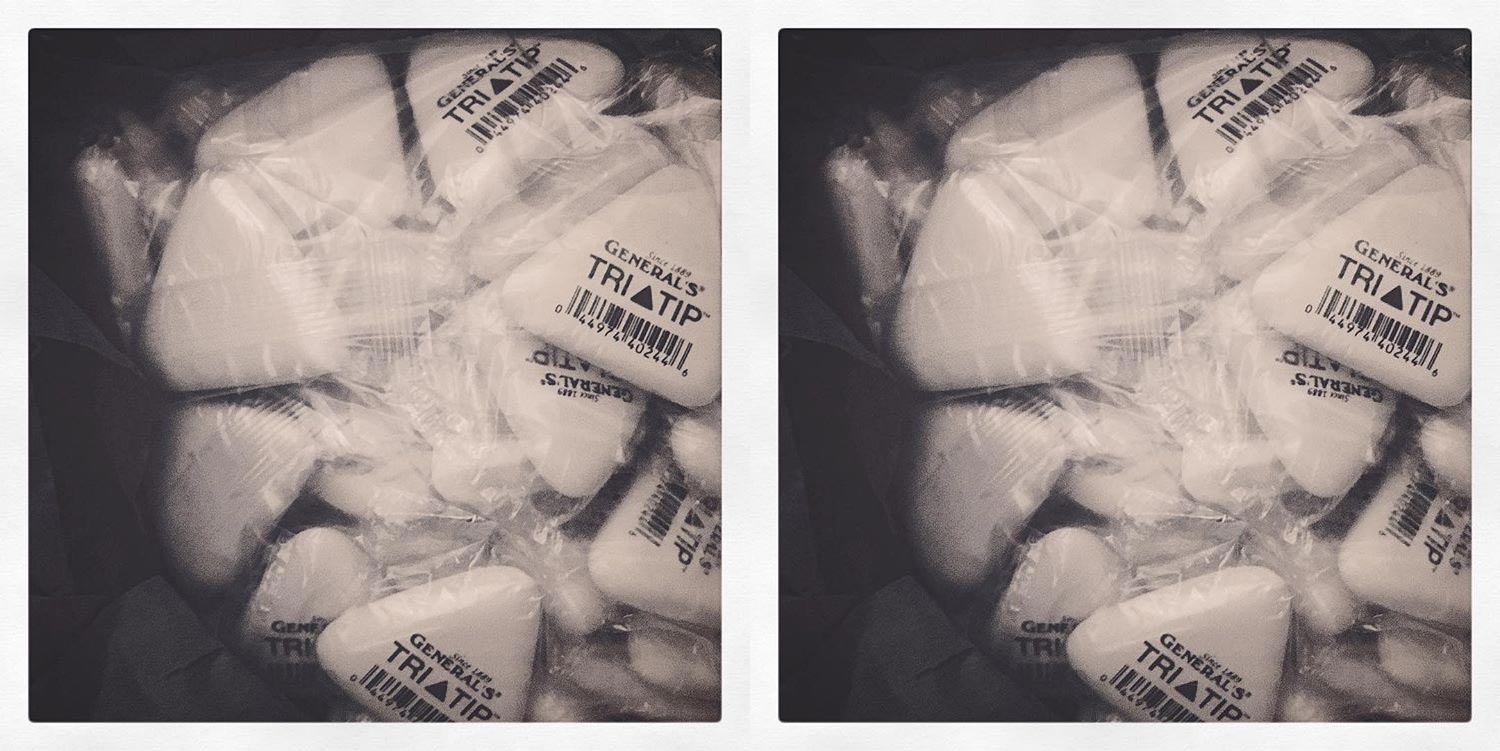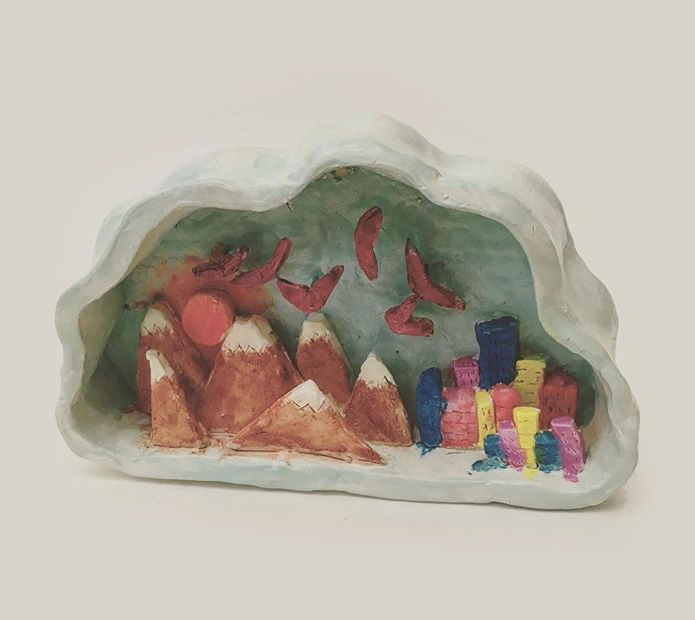“Miss Barley, Miss Barley I just made a mistake and it’s soooo beautiful’, Evan Ott said, at the tender age six. A squeal of glee followed and echoed through the studio. Evan has graduated college now. Perhaps even graduate school. I have a few more Christmas letters to catch up reading…
What do you make of the humble eraser? Don’t we all love the way they smell? I love how they bounce across the floor when dropped, to be found wedged between two pup paws delicately being torn to tiny pieces in a happy chaw. I think most kids are excited when they get some colorful erasers that look like Snoopy or Hello Kitty. Some people collect them. I know I used to covet my monster themed erasers as a kid – I believe they came from a cereal box.
We actually made it through the last two weeks of the semester at Studio Arts without erasers. An art school without erasers, you might ask? Even my advanced students working value drawings made due with a ratio of one eraser to a class of 15 teens, once we scrounged one from beneath a vagrant appliance. Astounding.
Imagine for a moment, if you will, that mistakes are potentially not actually mistakes. Or if this is easier, that with practice you can become so skilled at art you don’t need Arnold Swartzenegger (the character eraser) to blow up your paper with annoying eraser fur! Take care, sometimes Arnold leaves holes in things.
‘Violence is the first step in drawing’, a genius quote from my professor Barnaby Fitzgerald. I witness this when a student tears paper while eradicating the dark slashings made through heavy mark making attempts. Surgical precision comes later – after much practice. Yes, surgery can be considered violent.
Imagine an eraser ripped from your clutching hands by your teacher during a drawing lesson. Yikes, right? At the studio we often take erasers away from students to teach a rather freeing concept I learned from Barnaby. The viewer’s eye scans multiple lines the artist made while searching for the correct shape of a face. That eye will seek out and focus on the right and correct line and ignore the rest. So, the viewer’s eye will find the lines that most closely create the correct form naturally no matter the build up of multiple lines beside it. The new artist must learn to see while drawing close in to the page and should work in this manner, multiple lines without erasing. Not to condone scratchy marks or the same line laden again and again with pencil (another mark of lack of confidence). The artist must also remember to walk back and take a viewer’s look now and again. Only then can they see the magic at work, assess the situation and gain confidence. We must learn to progress with confidence and to find correctness making lots of marks without forever traveling backwards by erasing.

Imagine the liberation of an eraser free life! That is actually not the only reason we remove erasers from our charges.
Truly the eraser can become a detriment, a crutch, when nothing is broken in you but a bit of confidence and lack of practice. Some kids hang onto erasers as if they are a lifeline. Often the fledgling art student eradicates each mark they make when sussing a still life, unsure and at times unable to commit and move onto the next object they must draw to make a complete picture. Each new mark becomes a trauma to remove, rather than an invitation to adventure and completion.
Some grown people I’ve known hang onto mistakes as such. Perhaps they never had someone take their eraser away? Someone please take their eraser away!
‘There are no mistakes or accidents’ is often heard around our teaching studio and one of our favorite ways to support this life lesson: careful and minimal need for erasing of any sort. Allow the medium to blight and delight the white paper, and to finesse the adventure in drawing and painting.
‘I loved the erasers you put on the end of your pencil. It was always a great security feeling for me.’ Karen Burnett
So when DO we actually use erasers at Studio Arts? As we progress into drawing with delicate crosshatches that create precise value range within a form, the eraser comes in quite handy, especially when a layer or two has overlapped in too heavy an application and requires removing or lightening. If truly very dark, we suggest a stamp or a strike action, not a rub. Rubbing makes things look rather rain soaked and ‘rubbed out’. Watch out for Arnold the eraser again.
“I’ll be back” – Terminator
Sometimes an artist’s hand smears the fine graphic work they are making. Turn your hands over now everyone! Is the fisted underside of your pencil hand shiny and dark? Go wash up, grab an eraser to fix your smudges and tape or clip a clean ‘hand protector’ paper over your beautiful hard work! Crosshatching is king. Give it a try once you learn the technique! You have much more control over an image than the typical lazy smudging, albeit beautiful in the right environ.
When we do use erasers (and we do) we love General’s Tri-Tips. They are the best and shaped in a triangle, just like our building! Once you’ve used this brand, you’ll never try another. In fact, I was so inspired by opening a huge 75 count of them just now, I had to sit down to write about my love for erasers, and, why I whisk them away with regularity from my students.
We definitely need a fresh batch of the General’s Tri-Tips to begin this new semester! I’m sure we will welcome some cute new eraser-clutching students to support into happiness and confidence when January rolls around. And each new year more artists will learn that allowing ‘mistakes’ produces things of beauty.

